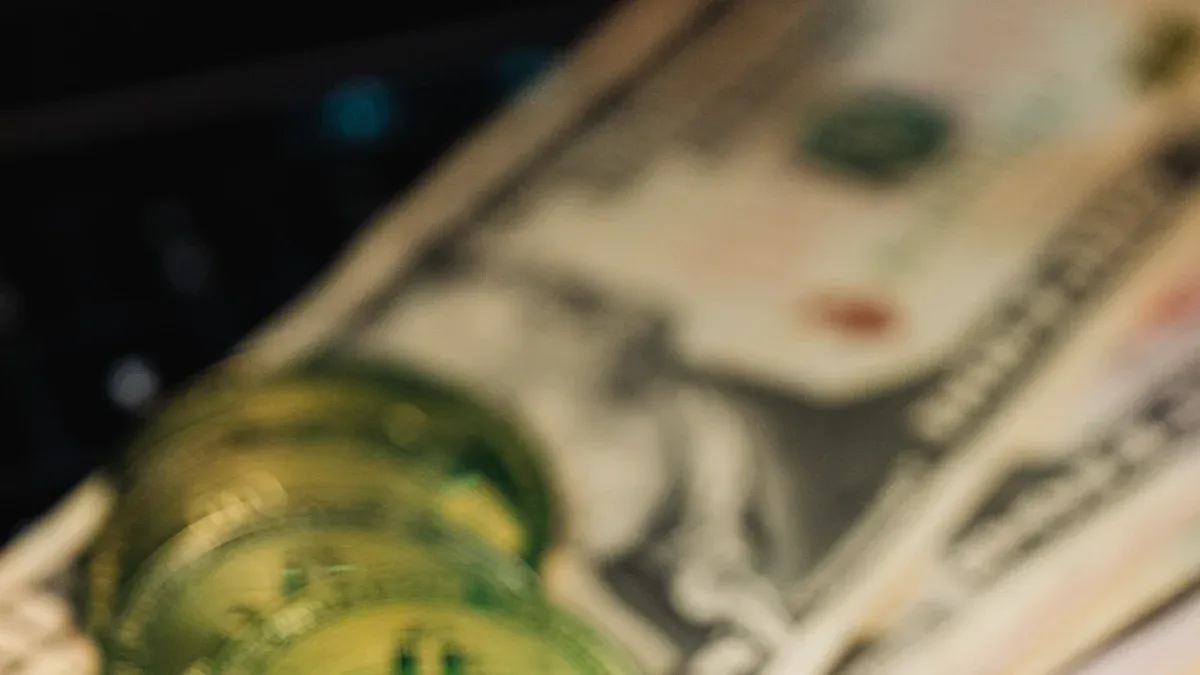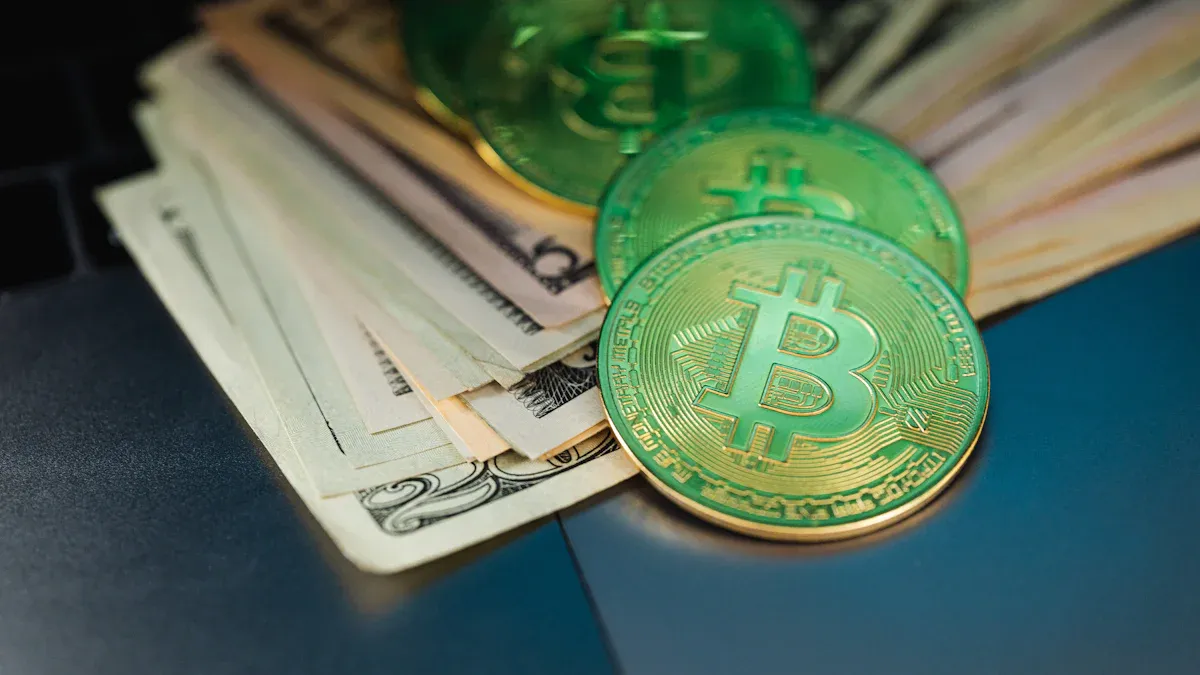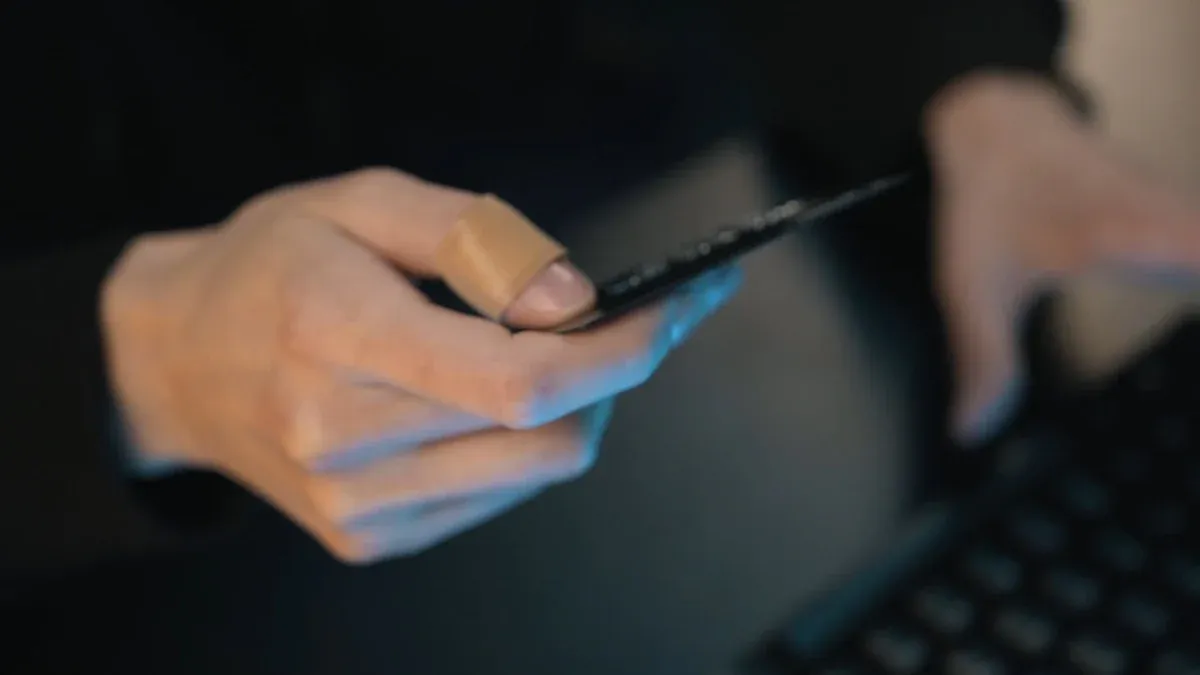- EasyCard
- Trade
- Help
- Announcement
- Academy
- SWIFT Code
- Iban Number
- Referral
- Customer Service
- Blog
- Creator
Essential USDT Remittance Guide for Parents of Overseas Students: Secure and Cost-Saving Cross-Border Payment Full Strategy

Image Source: pexels
Are you preparing a $50,000 tuition payment? Before choosing a remittance method, look at this startling comparison.
A traditional bank wire transfer of $50,000, including all hidden fees, may cost you over $1,000. Using USDT, total fees can sometimes be controlled under $300.
This seemingly small difference is exactly what you can save in the study abroad remittance process.
Core Points
- USDT remittance saves more money than traditional bank wire transfers, reducing many fees.
- USDT remittance operations include three steps: purchasing USDT, cross-border transfer, and converting to fiat.
- Choosing TRC-20 network for USDT transfers saves money and arrives quickly.
- USDT remittance has risks; need to prevent scams and comply with legal regulations.
- In mainland China, cryptocurrency trading is illegal; using USDT for remittance requires bearing risks yourself.
Cost Advantage Analysis of USDT Remittance

Image Source: pexels
To understand why USDT saves money, you first need to see the hidden fees behind traditional wire transfers.
Hidden Costs of Traditional Wire Transfers
The fees you see at the bank counter are far from all. The true cost of an international wire transfer usually consists of three parts:
- Wire handling fee: This is the fixed service fee charged by the bank.
- Intermediary bank fees: Your remittance may pass through one or more “correspondent banks” before reaching the final recipient bank. Each bank charges a processing fee, usually between $15 to $30.
- Exchange rate spread: The exchange rate provided by the bank is not the real-time market rate. They add a “markup” to the market rate, which is the bank’s main profit source and your largest hidden cost.
Tip: These fees layer up, causing a significant gap between what you pay and what your child actually receives.
Fee Structure of USDT Remittance
In contrast, USDT’s fee structure is more transparent. Your total costs mainly include:
- USDT purchase fees: When buying USDT with fiat, platform trading fees apply. For example, on some mainstream platforms, this fee can be as low as 0.2% or less.
- On-chain transfer fee (Gas Fee): Transferring USDT from your wallet to the recipient’s wallet requires paying a fee to the blockchain network. Choosing different networks (like TRC-20) significantly reduces this, usually just $1-2.
- Recipient cash-out fees: When the recipient converts USDT to local fiat (like USD), the platform charges a service fee. This fee varies by platform and withdrawal method, typically between 1% to 4.5%.
Overall, the total fee rate for the entire process can be controlled at a low 0.5%-2%.
Cost Comparison and Savings Estimate
To give you a clearer sense of the difference, here is an estimate using different study abroad remittance amounts:
| Remittance Amount (USD) | Traditional Wire Estimated Total Cost (USD) | USDT Remittance Estimated Total Cost (USD) | Estimated Savings (USD) |
|---|---|---|---|
| $10,000 | $200 - $350 | $50 - $200 | $150+ |
| $30,000 | $600 - $1,050 | $150 - $600 | $450+ |
| $50,000 | $1,000 - $1,750 | $250 - $1,000 | $750+ |
Note: The table above is an estimate based on average market rates. Actual costs vary by bank, trading platform, and market fluctuations, but USDT’s cost advantage is clear.
USDT Study Abroad Remittance: Full Secure Operation Process

Image Source: pexels
After understanding cost advantages, the next step is mastering the full secure operation process. This process is not complex, but every step requires extra caution. We break down every link from preparation to final payment, ensuring your funds arrive safely and efficiently.
Preparation: Platform and Wallet Selection
Good tools are prerequisite to the successful execution of a job. Choosing a secure and reliable trading platform and wallet is the cornerstone of the entire process.
1. Choose a Reputable Trading Platform
You need to buy USDT with fiat (like RMB) on a trading platform (also called exchange). When selecting, prioritize:
- High reputation and security: Platform should have good security records and user reputation.
- High liquidity: Many users and high trading volume mean faster buying/selling.
- Compliance and regulation: Platform should comply with relevant regional policies and provide proof of reserves for transparency.
Recommended Platform References:
- OKX: Known for low trading fees (as low as 0.1%), strong mobile experience, and regular proof of reserves audits; a user-friendly global platform.
- Binance: One of the world’s largest by volume, offers rich coin selections and very low fees (0.1%), especially popular among Asian users.
- Kraken: Long history, strictly regulated in the US, renowned for excellent security and compliance, ideal for high-security needs.
2. Understand and Choose Your Wallet
A wallet is where you store USDT. It falls into two main types: custodial and non-custodial.
| Feature | Custodial Wallet (e.g., exchange-built) | Non-Custodial Wallet (e.g., Biyapay, MetaMask) |
|---|---|---|
| Private Key Control | Managed by platform; access via account/password | You fully control private key, absolute ownership of assets |
| Usability | Simple operation, like online banking; recoverable if password forgotten | You responsible for private key/seed phrase backup |
| Security | Risk if platform attacked | Very secure if you safeguard private key |
| Recovery | Contact support to recover access | Permanent loss if private key/seed phrase lost |
Core Concept Explanation
- Wallet Address (Public Key): Like your bank card number; you can share it to receive USDT. It’s a long public string.
- Private Key: Like your bank card password or safe key. It’s the sole proof of asset ownership, never disclose to anyone. Whoever has the private key controls the wallet assets.
For beginners, start with the exchange’s custodial wallet. Once familiar, consider non-custodial like Biyapay for full asset control.
Step One: Secure Deposit (Purchase USDT)
“Deposit” means buying USDT with fiat. The most common way is via the platform’s P2P (peer-to-peer) market.
P2P Trading Process Overview:
P2P market is like “Taobao”; the platform acts as guarantor, you trade directly with other users (“merchants”). You pay RMB to the merchant (via Alipay, WeChat Pay, or bank transfer), and the merchant releases USDT to your platform account after receipt.
How to Safely Choose P2P Merchants?
- Check certification: Prioritize platform-certified “verified merchants” who passed strict reviews.
- Verify trading data: Choose merchants with high “total orders” and “completion rate” (e.g., over 98%).
- Read user reviews: Check other buyers’ feedback on the merchant; avoid negative ones.
- Start small: For first-time, start with a small transaction to familiarize with the process.
Operation Steps Overview:
- Find “Buy Crypto” or “P2P Trading” on the platform homepage.
- Select “Buy” USDT, filter your payment method (e.g., Alipay).
- Choose a reputable seller from the list, enter purchase amount.
- Complete payment per order’s merchant receipt info.
- Click “I have paid” on platform, wait for merchant to confirm and release USDT.
Important Tip: Use only platform’s in-app chat throughout. Do not switch to WeChat or Telegram. Before merchant releases USDT, platform “escrows” the funds, ensuring transaction safety.
Step Two: Cross-Border Transfer (Send USDT)
After purchasing USDT, transfer it from your wallet to the recipient’s (e.g., your child or designated service) wallet address.
1. Choose the Correct Transfer Network
USDT exists on multiple blockchain networks; different networks have huge fee and speed differences.
| Network Type | Transaction Fee (Gas Fee) | Transaction Speed | Common Scenarios |
|---|---|---|---|
| TRC-20 (Tron Network) | Extremely low (usually ~$1-$2 USD) | Very fast (seconds) | Strongly recommended, most cost-effective |
| BEP-20 (Binance Smart Chain) | Low (usually under $0.3 USD) | Fast (seconds) | Affordable choice |
| ERC-20 (Ethereum Network) | High (up to $5-$20+ USD) | Slower (minutes) | High cost, not for routine transfers |
Conclusion: For study abroad remittances, always prioritize TRC-20 network to save significant fees.
2. Verify and Confirm Recipient Address
This is the most error-prone and critical step. Cryptocurrency transfers, once completed, cannot be reversed or recovered.
Security Checklist - Must Read Before Transfer!
- Confirm network match: Your sending network (e.g., TRC-20) must exactly match recipient address network. Wrong network causes permanent loss.
- Copy-paste address: Directly copy full recipient address; do not type manually to avoid errors.
- Double-check address: After pasting, carefully verify starting and ending characters match original. Beware “clipboard hijacking” viruses that auto-replace copied addresses.
- Small test transfer: For large transfers, strongly suggest sending a tiny amount (e.g., 10 USDT) first. Proceed with full after recipient confirms receipt.
Operation Steps Overview:
- In your wallet or exchange, select “Withdraw” or “Send”.
- Choose USDT as coin.
- Paste recipient’s wallet address.
- Select correct transfer network (e.g., TRC-20).
- Enter amount, confirm all info correct, submit transfer.
Step Three: Secure Cash-Out (Convert to Fiat)
“Cash-out” is the recipient converting received USDT to local fiat (like USD). This is usually done by your child in the study destination.
Two main methods:
1. Sell via P2P Market
Opposite of your purchase. Your child sells USDT on local mainstream exchange P2P to local buyers, receiving via local bank account.
2. Use Crypto Payment Platforms
Innovative platforms (like Biyapay) offer more convenient solutions. Users deposit USDT, platform converts to USD, pays directly to school or landlord’s bank.
- How it works: Child deposits USDT to platform; platform converts and pays school/landlord bank.
- Advantages: Simplifies cash-out; child avoids finding P2P buyers or handling cash, safer and more convenient. Some institutions partner with such platforms, accepting crypto directly.
Core Risks and Anti-Scam Guide
The crypto world has opportunities and risks. Protecting assets is paramount.
Common Scam Types:
- Phishing attacks: Scammers send fake official links (e.g., fake exchange login) via email, SMS, or social media. Entering account/password or private key results in asset theft.
- Fake support: Anyone contacting via phone, Telegram, or WeChat claiming platform support and asking for password, verification code, or private key is a scammer.
- Address poisoning: Scammers send zero-amount transaction to your address with a similar address (only middle characters differ). If not careful, you may copy this wrong address from history next time.
Golden Rules for Protecting Private Key and Seed Phrase:
Non-custodial wallets give a 12- or 24-word “seed phrase”, another form of private key.
Remember these principles:
- Physical backup, offline storage: Handwrite seed phrase on paper, store in fireproof, waterproof safe (e.g., safe deposit box). Make multiple copies, store separately.
- Never digital storage: Do not screenshot, photo, or save in computer, phone notes, or cloud. Any internet-connected device risks hacking.
- Never share: Seed phrase and private key are highest asset authority. Never share with anyone, including family or friends.
- Beware any requests: Any platform, app, or person asking for seed phrase or private key is a scam.
Following these steps and security guides greatly reduces risks in USDT study abroad remittances, completing cross-border payments safely and worry-free.
Compliance Notes: Legal and Policy Risks
Though USDT shows advantages in cost and efficiency, you must clearly recognize underlying legal and policy risks. This concerns not only fund security but directly touches legal red lines.
Mainland China Regulatory Policies
You need to know that mainland China has strict cryptocurrency regulations. Before any operation, be aware:
- Trading deemed illegal: Officials clearly state any cryptocurrency-related business activities are illegal financial activities. This includes buying/selling USDT via P2P.
- No legal protection: All cryptocurrency-related investment/trading contracts are invalid. If losses or disputes occur, you cannot get legal protection and bear all consequences yourself.
- Potential legal consequences: Participating in crypto trading may face administrative penalties; if deemed involving illegal fundraising or financial fraud, may face severe criminal charges.
- Asset confiscation risk: Any gains from illegal crypto trading may be deemed illegal income and confiscated.
Important Warning: Do not rely on luck. Enforcement can track crypto activities via various technical means. Though technically feasible, using USDT remittance in mainland China’s legal framework keeps you in an unprotected gray area.
Study Destination Tax and Reporting Requirements
When funds arrive as USDT to your child, new compliance issues arise: tax reporting. Many countries include crypto in tax systems.
Taking mainstream study destinations as examples, your child may need to fulfill:
- United States: IRS treats digital assets as “property”. When child receives or disposes USDT, may need reporting. E.g., converting USDT to USD for tuition may generate capital gains/losses, reported via
Form 8949andSchedule D. All taxpayers must answer onForm 1040etc. if received/traded digital assets. - Australia: Crypto subject to capital gains tax (CGT) and income tax. When child sells/trades USDT, price changes generate gains/losses. Even small gains must be reported. Child must record each transaction date, amount, purpose for tax filing.
USDT remittance’s core advantages are low cost and high efficiency. TRC-20 transfers usually arrive in 1 minute, saving time and money. However, you must face challenges: certain operational threshold, security fraud risks, and uncertain regulatory policies.
Final Reminder: This guide is for information only, not financial or legal advice. After fully understanding processes and risks, proceed cautiously. Start with a small remittance, bear full responsibility for your financial decisions.
FAQ
Is there a limit on USDT remittance amounts?
Theoretically, USDT transfers have no upper limit. But purchasing USDT is affected by P2P merchant per-order limits. For large remittances, may need to buy in batches from different merchants.
How long does remittance take to arrive?
Using TRC-20 network, usually arrives in 1 minute. Far faster than traditional bank wires needing several business days.
What if I transfer to the wrong address?
Cryptocurrency transfers, once completed, cannot be reversed or recovered. If USDT sent to wrong address, funds are permanently lost; you bear all losses yourself. Thus, double-checking address before transfer is crucial.
*This article is provided for general information purposes and does not constitute legal, tax or other professional advice from BiyaPay or its subsidiaries and its affiliates, and it is not intended as a substitute for obtaining advice from a financial advisor or any other professional.
We make no representations, warranties or warranties, express or implied, as to the accuracy, completeness or timeliness of the contents of this publication.




Contact Us
Company and Team
BiyaPay Products
Customer Services
BIYA GLOBAL LLC is a licensed entity registered with the U.S. Securities and Exchange Commission (SEC No.: 802-127417); a certified member of the Financial Industry Regulatory Authority (FINRA) (Central Registration Depository CRD No.: 325027); regulated by the Financial Industry Regulatory Authority (FINRA) and the U.S. Securities and Exchange Commission (SEC).
BIYA GLOBAL LLC is registered with the Financial Crimes Enforcement Network (FinCEN), an agency under the U.S. Department of the Treasury, as a Money Services Business (MSB), with registration number 31000218637349, and regulated by the Financial Crimes Enforcement Network (FinCEN).
BIYA GLOBAL LIMITED is a registered Financial Service Provider (FSP) in New Zealand, with registration number FSP1007221, and is also a registered member of the Financial Services Complaints Limited (FSCL), an independent dispute resolution scheme in New Zealand.



















